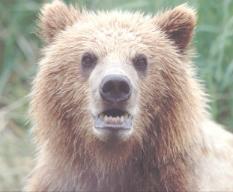 I’ve noticed while hiking in the high country this late summer and fall that something is notably missing – huckleberries. I’ve done a fair amount of hiking this year – on the PCT between Rainy Pass and the Canadian border, and closer to home on the northern and southern slopes of Mount Baker. Consistently I’ve seen small huckleberry crops in the alpine areas. I know the trails on the slopes of Mount Baker well, and my estimate is that the huckleberry crops there are 5-10% of a normal fall crop, depending on location. Aspect, shade / sun and soil are influencing factors in berry yields, but mostly the poor berry crop is a reflection of the late-arriving summer and unusual weather this year.
I’ve noticed while hiking in the high country this late summer and fall that something is notably missing – huckleberries. I’ve done a fair amount of hiking this year – on the PCT between Rainy Pass and the Canadian border, and closer to home on the northern and southern slopes of Mount Baker. Consistently I’ve seen small huckleberry crops in the alpine areas. I know the trails on the slopes of Mount Baker well, and my estimate is that the huckleberry crops there are 5-10% of a normal fall crop, depending on location. Aspect, shade / sun and soil are influencing factors in berry yields, but mostly the poor berry crop is a reflection of the late-arriving summer and unusual weather this year. The fact that we are having a poor berry crop this year is contributing to increased human-bear conflicts in some instances. Bears are involved in something called “hyperphagia” in the late summer and fall. Hyperphagia is essentially a feeding frenzy to put on weight for the winter denning period. When food crops are scarce, such as they have been this year, bears can find human garbage, bird feeders, orchards and compost even more attractive than when there are good natural food supplies. In my experience the years with the most human-bear conflicts are the years when natural food supplies for bears are most limited.
A poor berry crop this year will result in some bears going into their dens under their ideal weight. For females who have been bred this summer who are underweight this may mean that they will come out of the den next spring without cubs. Bears have developed an evolutionary survival strategy called “delayed implantation.” What this means is that while breeding season is May through July, the fertilized egg is not implanted until the female goes into the den in October or November. If a bred female goes into the den in poor physical condition the fertilized egg(s) will not be implanted, but will instead by sloughed off, and she will come out of the den the following spring without cubs.
Polar bears will likely suffer the same fate as receding sea ice due to global warming inhibits their ability to hunt seals. This is their primary food source and will result in decreased denning wieghts.
Interestingly I’m taking a class at the Whale Museum in Friday Harbor to meet the continuing education requirements for my teaching certificate. Last week we had a guest speaker, Dr Joe Gaydos, a veterinarian who works for SeaDoc Society, come share information with us about Mustelids. (Mustilids are the largest family of carnivores and include river otter, sea otter, mink and about 60 other species.) I was fascinated to learn that many (maybe all) Mustelids also have delayed implantation. In the case of mink, fertilized eggs are not typically implanted until 30 days after breeding, and gestation is 27-33 days. Delayed implantation obviously has survival advantages or it would not have evolved, and I find it fascinating, amazing really.
Nan Laney, GBOP field coordinator
